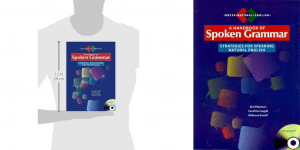By Peter Read
Those of us who teach English as a foreign language are only too well aware of the need to stretch our imaginations, as we attempt to explain to our students the complexities, together with the grammatical linguistic twists and turns- of the English Language. We recognise a requirement to help our students improve their pronunciation, learn vocabulary and understand grammar.
All are vital in providing our students with what is necessary for their continued development. We find proven, well-tested examples to assist and try, and whenever we can we try to use our own original ideas to clarify where necessary.
The Oxford or Harvard comma
It is grammar that sometimes proves the most formidable and which some students find the hardest to understand and put into practice. One specific example is the ‘Oxford or Harvard Comma’ upon which much has been written and debated. Sadly, it continues to prove a difficult topic to explain and many a teacher is left feeling that perhaps their students really don’t fully understand the practical implications involved in its use.
Definition of a comma
At a very elementary level a ‘comma’ is not a difficult punctuation mark to explain and use. A ‘comma’ is defined in the English Oxford Dictionary as ‘a punctuation mark indicating a pause between parts of a sentence or separating items in a list’.
This all seems quite straightforward. One might say that it is easily understandable and is such a regularly used form of punctuation that its meaning is also readily recognisable in other languages. For the uninitiated to proceed with this seemingly innocent attitude is dangerous and foolhardy.
An innocent aid to punctuation?
The simple comma can impact the meaning of a sentence or phrase. This alone can lead to misunderstandings, misinterpretations and in some cases, as we shall see later, have legal and costly economic consequences. Hence the need for extreme caution when using this apparently innocent aid to punctuation, that is generally understood to make written words and sentences grammatically more easily understood.
Let’s take a grammatical minesweep.
At this stage, before we progress, perhaps the need for a grammatical minesweeper might be a consideration.
By incautiously taking one step further into what is a grammatical minefield and introducing the ‘Oxford Comma’, one risks unexpected explosions when venturing into a grammatical ‘no-mans land’ where the uninitiated are not necessarily suitably prepared. It is essential to offer an objective interpretation of the meaning of what an author or draftsman intended. To do so is brave and sometimes requires a great deal of linguistic skill.
The ‘Oxford’ comma is the last comma in a categorically listed series of events
Generally, punctuation and the common comma are intended to make the meaning of sentences clearer. This is what we tell our students. The effect, however, in some instances has had completely the opposite effect. When is the ‘Oxford’ comma used? What is this intriguing, and to teachers and students alike, troubling grammatical tool? Consider the following:
“I admire my English teachers Mrs Brown and Mr White”. No Oxford comma.
“I admire my English teachers, Mrs Brown and Mr White”. With an Oxford comma after the word teachers.
Without the ‘Oxford Comma’ the sentence could be interpreted to mean that you admire your teachers who are Mrs Brown and Mr White. With the ‘Oxford Comma’ in the second example, the meaning changes and you admire three entities, your teachers, Mrs Brown and Mr White. A very subtle distinction.
So it appears that it is used when there is a need for a ‘slight break’ prior to a co-ordinating conjunction where three or maybe more items follow in a sentence. It is suggested that by doing so, it is easier to understand the meaning of a sentence or phrase.
A TV celebrity chef might be heard to say:
“To prepare this dish, I’ll need a large bowl, sharp knives, and the ingredients”.
A famous sommelier might say:
“My favourite white wines are Chardonnay, Sauvignon Blanc, and Pinot Grigio”
In both cases the ‘Oxford’ comma appears before ‘and’.
The origins of the Oxford comma can be traced back over 100 years to the Oxford University Press where it was part of a style guide issued to staff employed at the Press. Similarly, it is the house style at Harvard University Press in Boston, Massachusetts, where it continues to be used to the present day. Hopefully, these simple examples provide an explanation and show where and how it is used. The purpose is to provide the reader with a clear understanding of what has been written. However, its use often causes confusion and misunderstanding.
The above explanation also serves as a precursor to the serious consequences that can arise elsewhere, including the drafting of legal documents, together with their interpretation and the resultant decisions that flow from the sentences, clauses and grammar that is used. As a Business and Legal English teacher, it is essential that my students fully understand the implications and risks involved and the importance of using easily interpreted legal grammar.
The transatlantic comma.
For reasons that will shortly become clear, certainly when used in a legal context, it might also be called “The Trans-Atlantic Comma”
In the legal context consider the following:
The Plaintiff, who looked calm, was successful. Oxford comma
The Plaintiff who looked calm was successful. No Oxford comma
In the first example there is no impediment in the relative clause “who looked calm” between the two commas, suggesting that whether or not the Plaintiff looked calm, had no impact on the outcome of the case. In the second version, where there are no commas, the fact that the Plaintiff “who looked calm” becomes essential to the meaning. It suggests that there were at least two Plaintiffs and that the Plaintiff who looked calm was successful and that the other one did not succeed. This is an example of where many readers will interpret what they read differently.
Stepping back slightly, it was until recently, an accepted doctrine of English Contract Law to use punctuation sparingly, both in contracts and also in other related legal material. Traditionally the view was that whilst commas are intended to clarify meaning, they can at the same time be superfluous, create ambiguity and are unimportant.
Much of the reasoning for this relates to a Rule of English Law, one that a diligent lawyer always has in mind when reading and drafting legal documents. It is the ‘Contra Preferentem Rule’ that simply states that any ambiguities in a contract will be construed against the maker and, where a term or phrase is ambiguous, the recipient will be the beneficiary and not the drafter of the contract.
This has traditionally been recognised in all insurance contracts. Hence insurance underwriters have always tried to ensure that nothing in the terms and conditions of the Policy of Insurance can be ambiguous or misunderstood in the cover that they provide. This is achieved in a number of ways that includes keeping punctuation and, in particular, the use of commas to a minimum.
Bearing in mind the importance of the rule and using it as an aide memoire, the whole debate about the ‘Oxford Comma’ becomes far more important and relevant to everyday commercial decisions. There can be serious consequences when a court is asked to interpret a major piece of legislation where ambiguities are alleged that if proven will have a significant financial impact on the drafters and on those who implement the legislation.
In a case recently litigated before the United States Court of Appeals for the First Circuit, the stakes were high. The Court was asked to consider the effect of a missing ‘Oxford Comma’ in a piece of legislation that formed part of the State of Maine’s Employment Law, a section that dealt specifically with the entitlement employees had to receive overtime pay.
The relevant State law confirmed that certain activities did not qualify for and were excluded from any entitlement to overtime pay. It stated that:
The canning, processing, preserving, freezing, drying, marketing, storing, packing for shipment or distribution of:
- Agricultural produce;
- Meat and fish products; and
- Perishable foods
The case had been brought by drivers employed by a dairy company that had used the standard State wording in the contract of employment with its drivers. The case hinged on an interpretation of the exclusions from overtime pay as detailed above. The drivers sought to recover overtime payments that were due retrospectively over a period of four years.
Their argument was based on interpreting what followed after the last comma in the first sentence…’storing, packing for shipment or distribution of:’ The Court of Appeals decided in favour of the drivers, making it clear that in its opinion the words and lack of a comma after the word ‘shipment’ made it unclear whether the State law excluded the distribution of the three identified categories or if it only excluded ‘packing for’ the shipment or distribution of them.
Certainly the impact was felt by the dairy company which reimbursed the drivers approximately US $5m in outstanding overtime payments and also the State of Maine, which redrafted the relevant clause, using semi-colons throughout in place of commas.
A salutary lesson and a fascinating exercise in grammatical research. What at first blush appears nothing more than another aspect of punctuation to discuss with students, can become disproportionately important. To anyone involved in teaching Legal English it is imperative that they are aware of the implications of a missing ‘Oxford Comma’.
For those involved with providing legal translations there are further obstacles to consider in a legal grammatical minefield that is scattered with surprises, including the need to identify and being aware of what is acceptable in some jurisdictions and what is strictly forbidden, meaning that they must have a working knowledge of the legal systems in all the countries in which they work.




